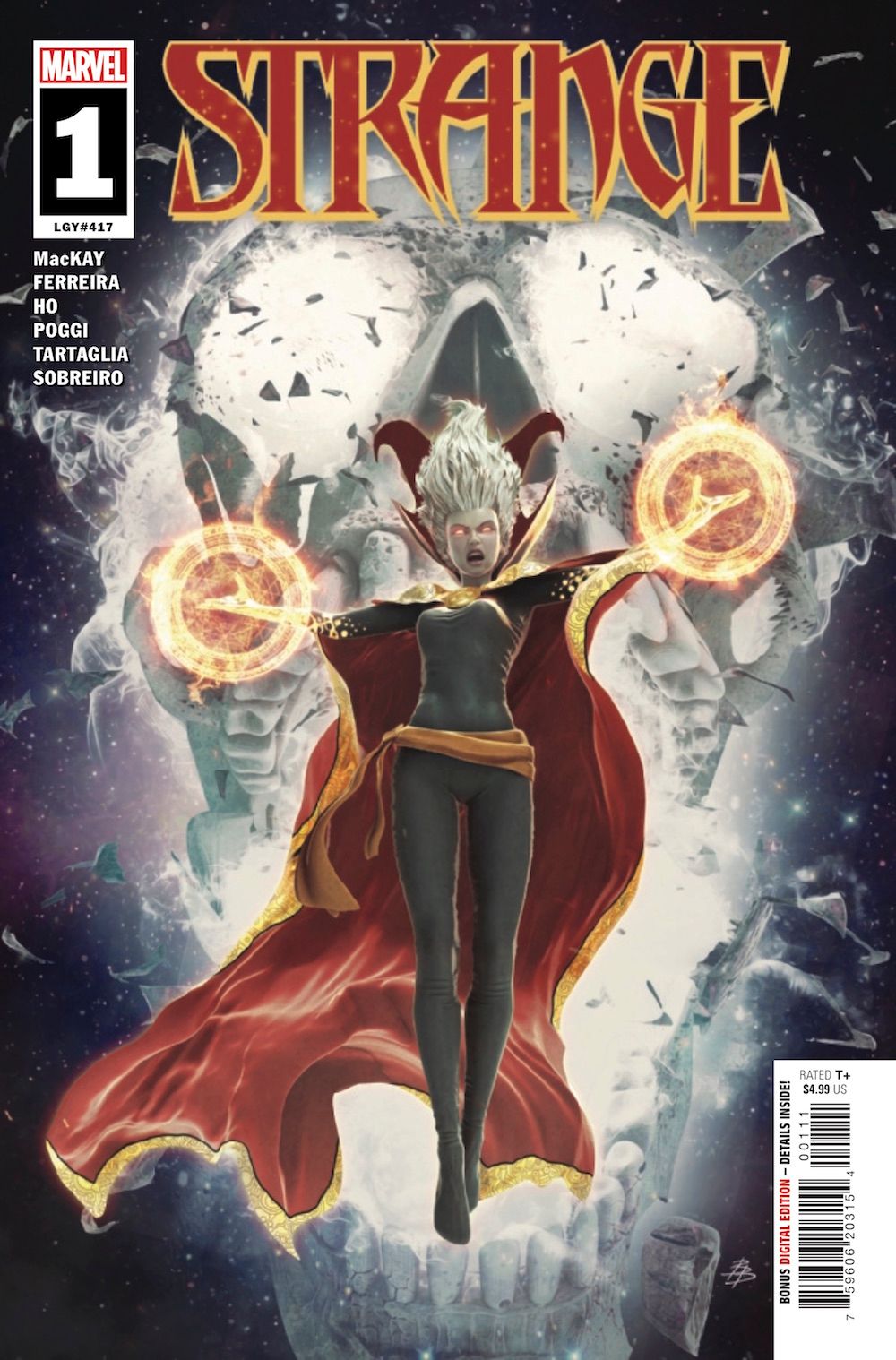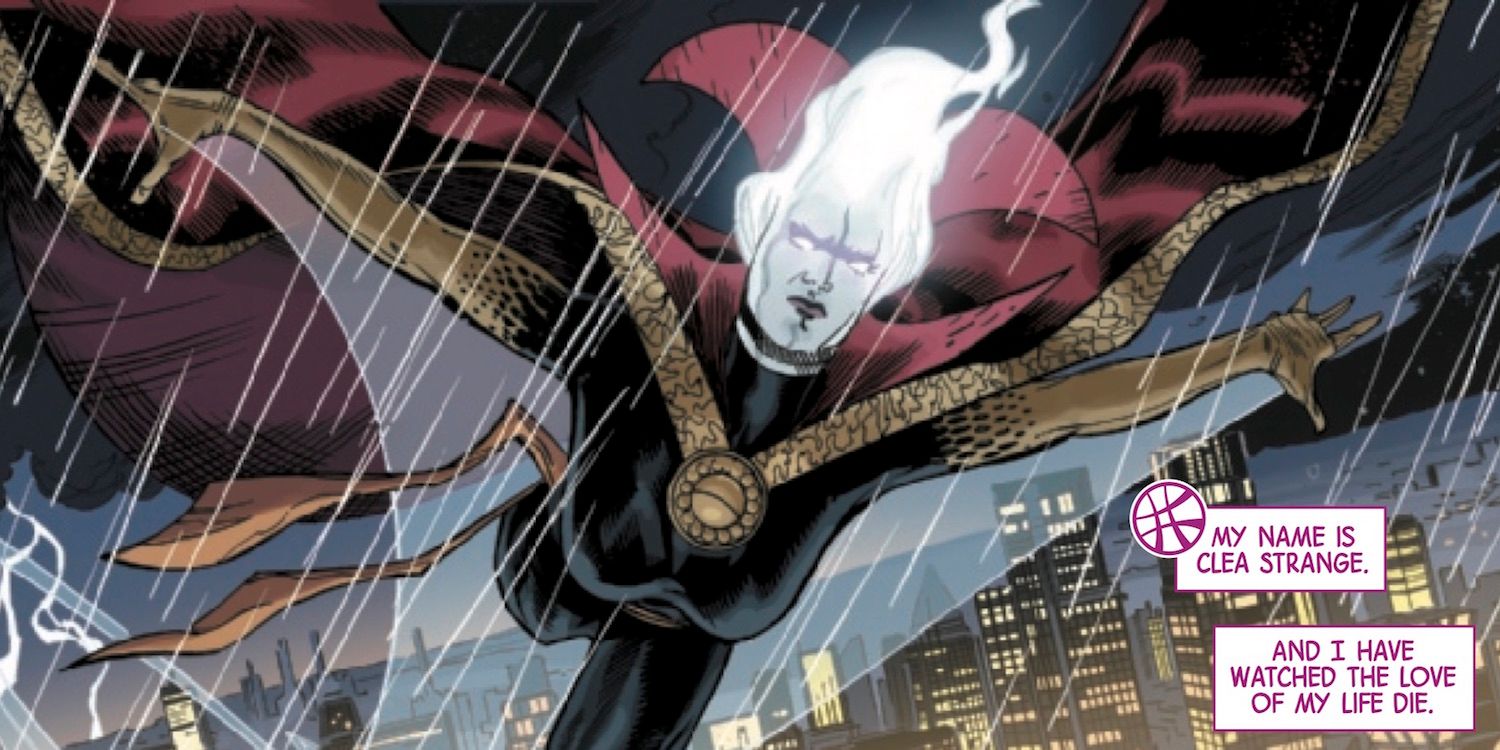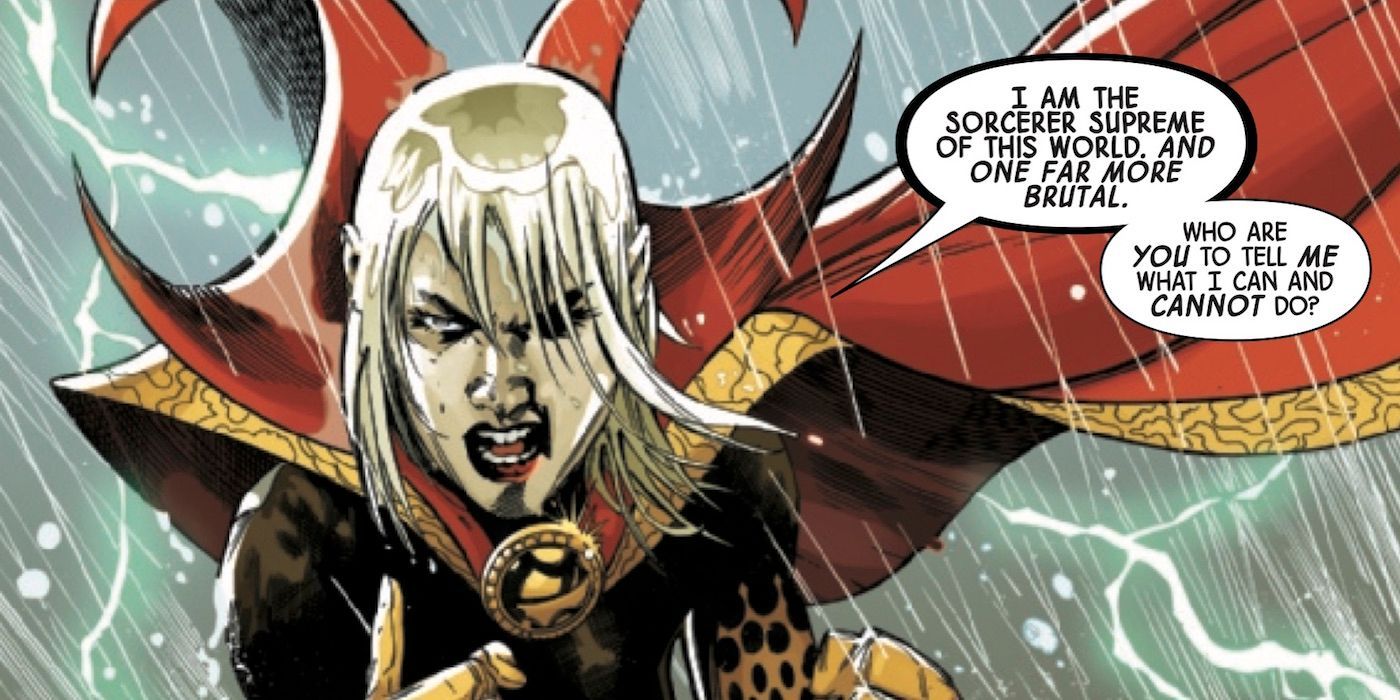
Doctor Strange has met a horrible end, but it was a long time coming. Now with the Marvel hero gone, the magical barrier protecting the Earth has also gone, leaving the planet open to invasion from interdimensional threats. In Strange #1, Stephen's estranged wife Clea has decided to step up in her late husband's place. She assumes the role he left behind as Doctor Strange and gained his incredible powers. However, the new Sorceress Supreme doesn't have heroics in mind. Clea has only one mission: to bring her beloved Stephen back from the dead once more. She isn't about to let anything, whether it be the villain Harvester or potential successor Doctor Doom, stand in her way.
While Stephen was never a saint, his brand of heroism was clear-cut, clean, and conscientious. The same cannot be said for Clea's stint as Doctor Strange. She's harsh, ruthless, and violent. She causes a lot of collateral damage, racking up a big body count and a whole host of casualties -- and couldn't care less about it. She veers into '90s Dark Age era comic territory with her snarking, sneering, cynical edginess. Strange #1 is reminiscent of the infamous Knightfall arc, with Batman out of commission and Azrael taking up the cowl in brutal knight templar fashion. However, Clea's reasons for her rough approach and attitude are more understandable, even if her actions aren't justified.

Given Clea's edgier characterization, it's no surprise that Strange #1 is a darker read than many previous Doctor Strange arcs. The estranged wife of the previous Sorcerer Supreme isn't without her sense of humor, cruel and sarcastic as it is. Her rapport with everyone, friend or foe alike, is satisfyingly sharp and witty. Her fight scenes, especially against the overarching foe Harvester, are thrilling, if rather over the top. However, Doctor Doom's presence in Strange #1 is just as strong, if not stronger. His altercation with Clea is electrifying, and his own motivations to usurp her as the new Sorcerer Supreme are surprisingly moral and sound. It helps that he, too, has a history of losing loved ones and turning to magic to save them, and even maintains his strong respect for Stephen and his debt to him after the sorcerer's death.
Artistically, Strange #1 is a marvelous read. The art style, with pencils by Marcelo Ferreira and rendered in lush inks by Don Ho and Roberto Poggi, is as intricate and realistic as is to be expected in a top-of-the-line Marvel entry. However, it's the colorists, Javier Tartaglia and Felipe Sobreiro, who steal the show. The palette is considerably muted, which suits the darker and anti-heroic bend of this issue. Reds are toned down to dark maroon and wine shades, providing a focal point amidst hazes of ochres, drab blues, and bright bursts of magic.

In terms of writing, Strange #1 is exposition-heavy. There is a lot of ground and backstory for this issue to cover, to the point where it gets rather dizzying. Writer Jed MacKay, famed for his strong story arcs, does a good job of tempering this exposition by channeling the storytelling conventions of traditional and neo-noir films and fiction. The setup for this rather intense and caustic story arc, for both Clea and Stephen, is quite good. It's a nice chance to see someone else in Doctor Strange's inner circle stepping into the role of Sorcerer Supreme and hero, even if she clearly doesn't want to.
Grief and death are big topics in this issue, for both the protagonist and antagonist. While the big overarching threat is the survival of the world in the wake of the loss of their magical hero, both the hero and the villain are using Doctor Strange's role to cope with or deny his death. Under the veneer of gratuitous gore, explosions, and brutal spells, Strange #1 sets up a story arc with a surprisingly mature take on death and acceptance. Although it can careen straight into edge-lord territory, Strange #1 is an otherwise strong start to a far darker take on the Sorcerer Supreme and the power of love in the face of grief.
Source: Trendz OH
No comments:
Post a Comment